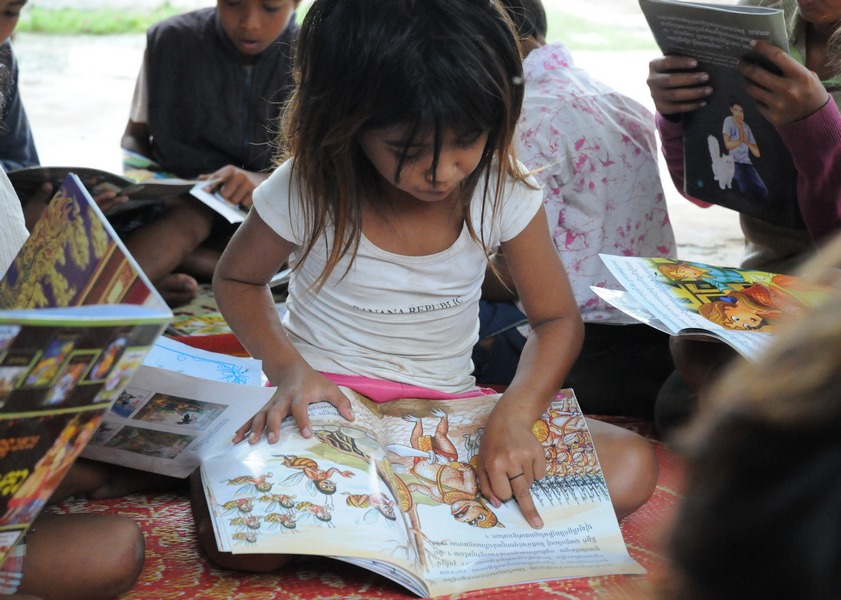“First, let me show you our range of publications,” says Huot Socheata, the woman behind the search for the Cambodian Maurice Sendak. Before long, the table is covered in children’s books: picture books; information books; story books; books to inform; books to inspire, the vast majority in Khmer; a few in English or French. They are the product of more than 12 years of work by Sipar, an NGO dedicated to rebuilding literacy and publishing in Cambodia.
Socheata, Sipar’s chief editor, explains that the group was originally involved on the ground, providing library services in the refugee camps on the Thai border in the late ’80s. “In 1993 we began working with the ministry, setting up libraries in the provinces: Kompong Speu, Prey Veng. Then we found there was a shortage of books to put in the libraries.”
In 2000, Sipar began a publishing programme that continues to this day: books to complement official textbooks; books telling stories to develop Cambodian identity; books allowing children to explore the world through learning about other cultures; an atlas to teach how to read maps. There are stories about daily life, a reflection of the world that Cambodian children live in. “It is important to teach how to read the pictures, not just the words, and then children move to more and more elaborate storytelling. We also want to encourage young people to access the world and the many ways that people live.”
Translations of Saint-Exupery’s The Little Prince and Astrid Lindgen’s Pippy Longstocking lean out from the shelf. Roald Dahl stories. A children’s biography of Charlie Chaplin. Folk tales from China, Japan, Greece. Cambodian history is another important component of the range, but there are big gaps. “There are books about Angkor and books about the Khmer Rouge, but very little about the time in between.” A memoir about growing up in Kompong Cham in the 1950s is the exception in the ongoing effort to build awareness of how modern Cambodian society developed.
“Publishing in Cambodia is still underdeveloped and there is a great need for training: editors; writers; illustrators; translators; the whole publishing process.” Most of the stories are developed through workshops, for ideas and illustrations, with specialists to complete the manuscripts.
Although the focus is primarily on children, books on subjects such as organic farming are produced for the less educated, and a map has been created that is given away free to tuktuk drivers to help with map literacy. In the markets, in contrast, books are sold at cost. “If we give a book away for free, people can think it has no value. Even paying 2,000 riel means it is respected.”
Sipar is just one of the organisations involved in a major event taking place at the end of November: the second annual Cambodian Book Fair, to be held at the National Library, with the theme of Cambodia and book publishing. The event is open to the public and will feature vendor displays; presentations; creative writing and publication seminars, and author signings.
WHO: The budding Cambodian book publishing industry
WHAT: Cambodian Book Fair
WHERE: National Library, Street 92
WHEN: November 29 – December 1
WHY: The Cambodian Maurice Sendak is out there somewhere
